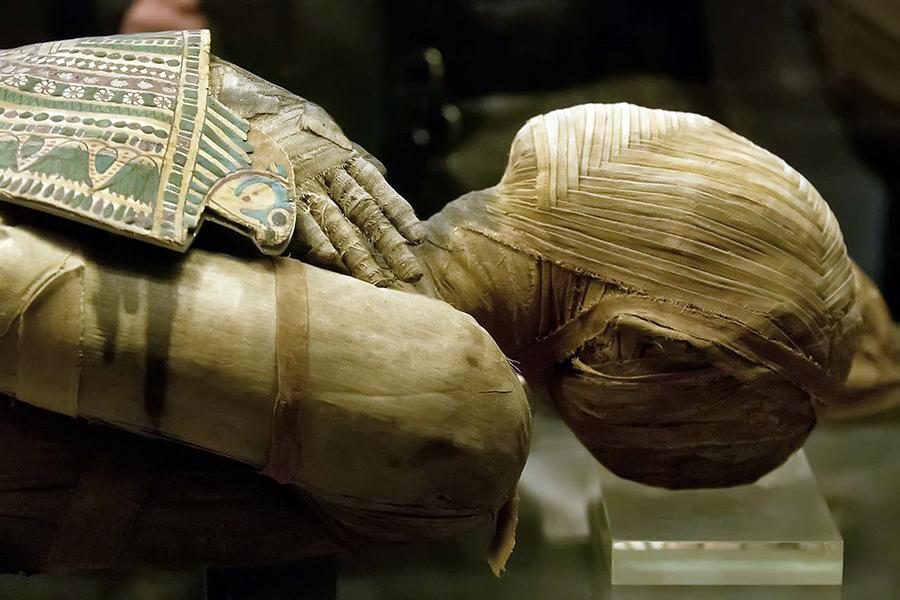Royal Tombs - Mummy#

Royal Tombs - Mummy, © Gerhard Huber, under CC BY-NC 4.0 +Edu
The dead were wrapped with asbestos-coated linen sheets, embedded in wooden coffins, and buried with precious burial objects. This of course attracted a lot of tomb robbers, so there is not much left of these treasures.
As fun-loving as the Greeks and Romans were, they had great respect for the netherworld. They were the first to invent the concept of a soul which at the moment of dying separates from the body to fly into the realm of the dead, the Hades. Hermes, the messenger of the gods, guided the souls of the deceased to the mythical river Acheron. There, Charon, the ferryman of Hades, waited and demanded a toll for the crossing. In most cases, the realm of the dead was seen as a gloomy and cheerless resting place, where the suffering souls longed to return to life. It was thought that the dead might even affect the destinies of the living. Therefore it could not hurt to honour the ancestors from time to time with commemorations and sacrificial rituals.
Die Toten hat man mit asbestbeschichteten Leinentüchern umwickelt, in Holzsärge gebettet und mit reichen Grabbeigaben bestattet. Das lockte natürlich Grabräuber an, sodass von den Schätzen nicht viel übrig blieb.
So lebensfreudig die Griechen und Römer auch waren, vor dem Reich der Unterwelt hatten sie großen Respekt. Sie brachten erstmals den Begriff der Seele auf, die sich im Augenblick des Sterbens vom Körper löst, um in das Reich der Toten, den Hades zu fliegen. Götterbote Hermes geleitete die Seelen der Verstorbenen bis zum mythischen Fluss Acheron. Dort wartete der Fährmann Charon, der für die Überfahrt eine Gebühr verlangte. Meist sah man das Totenreich als düstere und freudlose Ruhestätte, wo sich die leidenden Seelen ins Leben zurücksehnten. Man vermutete, dass die Toten vielleicht sogar die Geschicke der Lebenden beeinflussen. Daher konnte es nicht schaden, die Ahnen ab und an mit Gedenkfeiern und Opferritualen zu ehren.